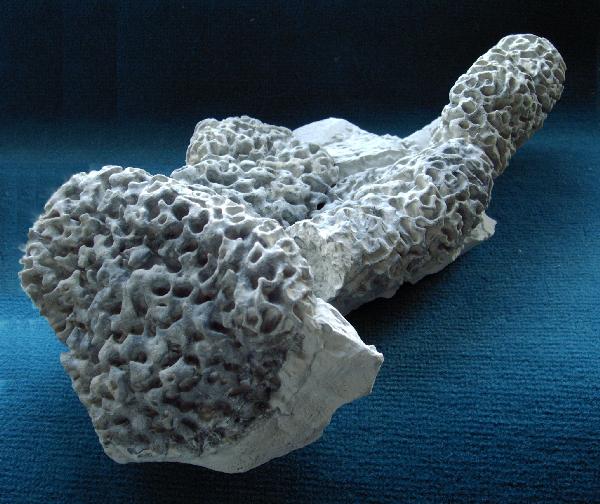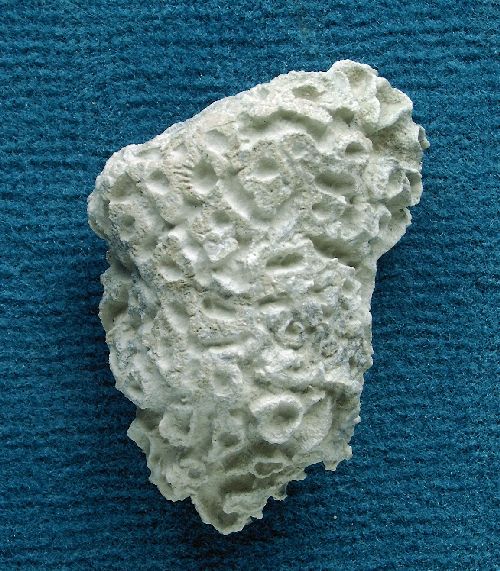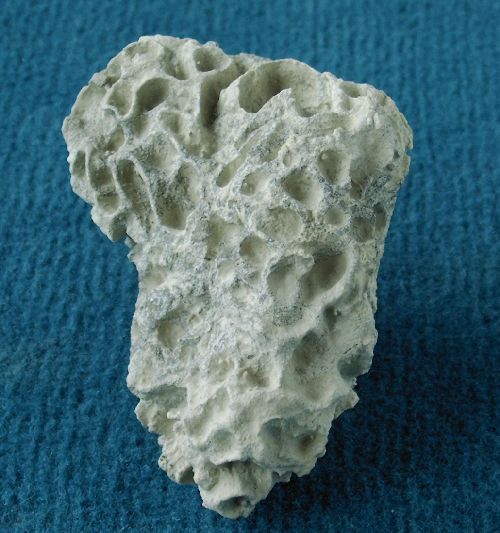
Cyclostigma lobata
Schrammen 1912
Cyclostigma lobata is a very rare species reported from the Upper Campanian of Ahlten (close to Misburg) by Schrammen (1912). Cyclostigma lobata forms encrusting lumpy masses which tend to become very large. The specimen shown here is some 350 mm wide.


Cyclostigma meandrina
Schrammen 1912
Cyclostigma meandrina is a rare species reported from Oberg (near Ilsede) by Schrammen (1912). It is reported here from Höver for the first time.
The pear-shaped specimen of Cyclostigma meandrina is shown here from both sides, since they are distinctly different.
On its underside (top image), the specimen shows a small root-like appendix in about one third of the specimen hight (not recognizable on the photo), suggesting that the live orientation of the sponge was slightly inclined.
The general structure of the sponge is meandriform (similar to Plocoscyphia), consisting of a thin (1 mm), contorted skeletal sheet, forming short (5 mm), outwardly directed, tubular segments and meandering walls. There is no obvious paragastral cavity.
On the asumed underside of the specimen (upper image), the tube ends are modified into disc-shaped rims, some with pronounced radial furrows. All these flat rims lie within a common envelopping surface. Such features are absent from the upper side of the sponge, probably because the individual was still growing in an upward direction.
The dictyonal skeleton consists of approximately five layers of fused lychnisks, which form a highly regular structure of cubic meshes. On the disc-shaped tube ends, a cortical layer of heavily silica-mantled lychnisks is observed. Contrary to the dictyonal skeleton, this surface layer is highly irregular, leaving small pores of variable sizes between the fused surface scleres. - The skeletal structure of the rootlet is analogous to that of the cortical crust.